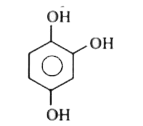Introduction (परिचय)|Bonding In Carbon Compounds (कार्बन यौगिकों में आबंधन)|Covalent Bond And Its Type (सहसंयोजक बंध एवं इसके प्रकार)|Polar And Non Polar Covalent Bond (ध्रुवीय एवं अध्रुवीय सहसंयोजक बंध)|Characteristics Of Covalent Compound (सहसंयोजक यौगिकों के गुण)
Step by step video solution for Introduction (परिचय)|Bonding In Carbon Compounds (कार्बन यौगिकों में आबंधन)|Covalent Bond And Its Type (सहसंयोजक बंध एवं इसके प्रकार)|Polar And Non Polar Covalent Bond (ध्रुवीय एवं अध्रुवीय सहसंयोजक बंध)|Characteristics Of Covalent Compound (सहसंयोजक यौगिकों के गुण) by Chemistry experts to help you in doubts & scoring excellent marks in Class 12 exams.
Updated on:21/07/2023Similar Questions
Introduction(परिचय )|Bonding In Carbon Compound(कार्बन यौगिक में आबंधन)|Covalent Bond And Its Type(सहसंयोजक बंधन और उसके प्रकार)|Polar And NonPolar Covalent Bond(ध्रुवीय और अध्रुवीय सहसंयोजक बंधन)|Characterstics Of Covalent Bond(सहसंयोजक यौगिकों के गुण )|
View SolutionIntroduction(परिचय )|Bonding In Carbon Compound(कार्बन यौगिक में आबंधन)|Covalent Bond And Its Type(सहसंयोजक बंधन और उसके प्रकार)|Polar And NonPolar Covalent Bond(ध्रुवीय और अध्रुवीय सहसंयोजक बंधन)|Characterstics Of Covalent Bond(सहसंयोजक यौगिकों के गुण )|
View Solution
Knowledge Check
Two substances X and Y are dissolved in water under suitable conditions. X is a gas while Y is a solid under normal conditions. Solution of Y is found to conduct electricity but not 'X'. Based on the conclusion identify the nature of bond present in X and Y with appropriate reasons as given below.
Arrange the steps given below in a sequence.
(1) Y is a solid at room temperature and its aqueous solution conducts electricity. This shows that it is an ionic compound.
(2) X on dissolution in water does not conduct electricity and is a gas at room temperature. Hence it should be a non-polar covalent molecule.
(3) Aqueous solutions of both ionic compounds and polar covalent compounds conduct electricity because of the presence of free ions.
(4) All ionic compounds are solids and most of the non-polar covalent molecules are gases or solids at room temperature. Polar covalent compounds are liquids or gases.A3 4 2 1B1 4 3 2C1 3 2 4D3 1 2 4Ionic bond is defined as the electrostatic force of attraction holding the oppositely charged ions. Ionic compounds are mostly crystalline solid having high melting and boiling points, electrical conductivity in moleten state, solubility in water etc. Covalent bond is defined as the force which binds atoms of same or different elements by mutual sharing of electrons in a covalent bond. Covalent compounds are solids, liquids or gases. They have low melting and boiling points compounds. They are more soluble in non-polar solvents.
The valence electrons are involved in formation of covalent bonds is /are called :Anon-bonding electronsBlone pairsCunshared pairsDnone of theseIonic bond is defined as the electrostatic force of attraction holding the oppositely charged ions. Ionic compounds are mostly crystalline solid having high melting and boiling points, electrical conductivity in moleten state, solubility in water etc. Covalent bond is defined as the force which binds atoms of same or different elements by mutual sharing of electrons in a covalent bond. Covalent compounds are solids, liquids or gases. They have low melting and boiling points compounds. They are more soluble in non-polar solvents.
The valence electrons are involved in formation of covalent bonds is /are called :Anon-bonding electronsBlone pairsCunshared pairsDnone of these
परिचय |कार्बन योगिकों मे आबंधन |सहसंयोजन बंध एवं इसके प्रकार |ध्रुवीय एवं अध्रुवीय सहसंयोजन बंध एवं योगिक |कार्बनिक योगिक क्या है ?|अपररूपता एवं कार्बन के अपररूप |कार्बन की सर्वत्रोंमुखी एवं इसके कारण |सजातीय श्रेणी |सारांश
View Solutionपरिचय|कार्बन यौगिक में आबंधन|सहसयोंजक बंध एवं इसके प्रकार|ध्रुवीय एवं अध्रुवीय सहसयोंजक बंध एवं यौगिक|कार्बनिक यौगिक क्या है?|अपररूपता एवं कार्बन के अपररूप|कार्बन की सर्वतोमुखी प्रकृति एवं इसके कारण|सजातीय श्रेणी|क्रियात्मक समूह|Summary
View Solutionबंधित युग्म और एकाकी युग्म |सहसंयोजी बंध के प्रकार |सहसंयोजी यौगिकों के सामान्य गुण |लुईस लैंगप्यूर सहसंयोजक बंध सिद्धांत की सीमाएं|Summary
View SolutionDistinguish between polar and non-polar covalent bonds with respect to
(i) mode of formation
(ii) Charge separation
(iii) type of atoms involved in bond formation.
View SolutionThe intermolecular forces of attraction (i.e., H-bonding and van der waal's forces) exist among polar and non-polar species which effect melting point, boiling point, solubility and viscosity of covalent compounds :
Q.The type of molecular force of attraction present in the following compounds is :
View Solution
